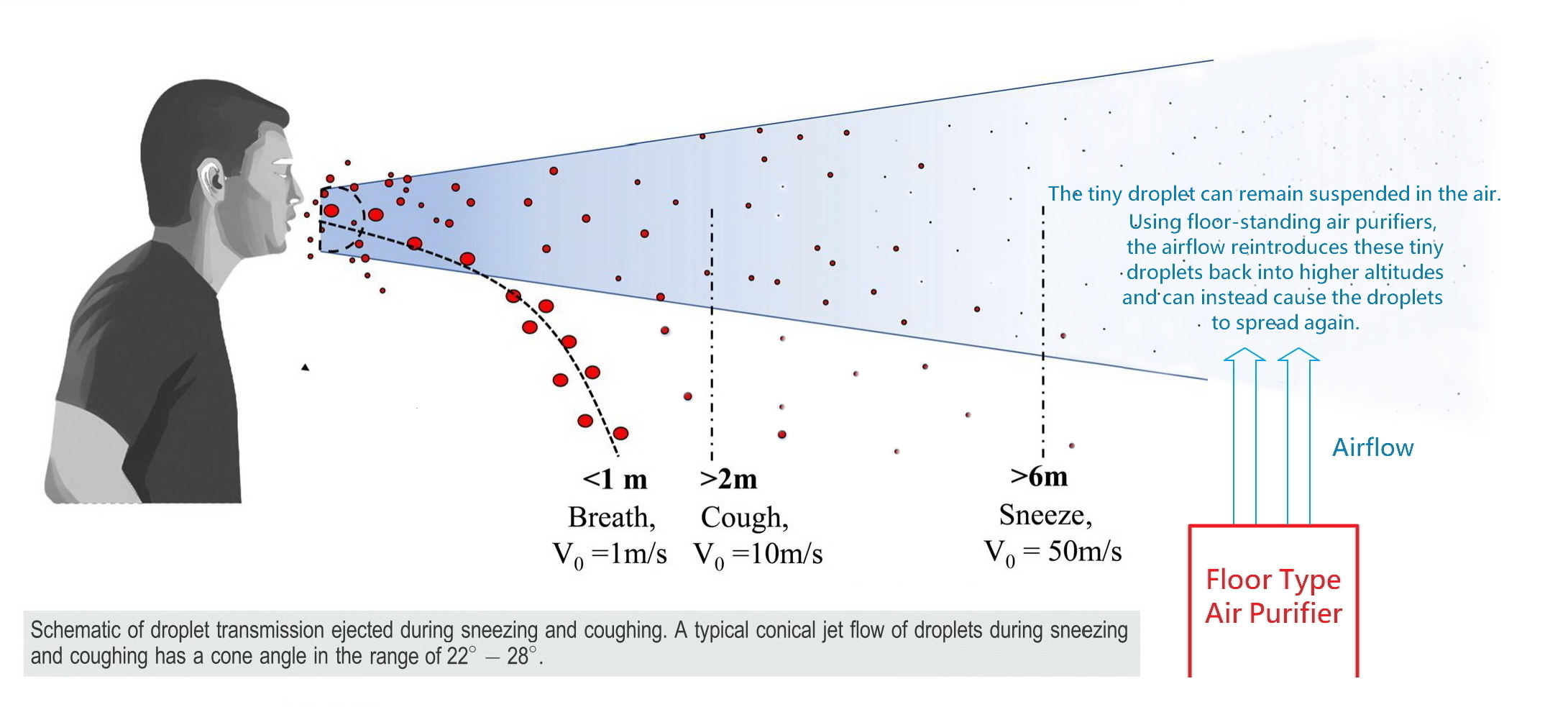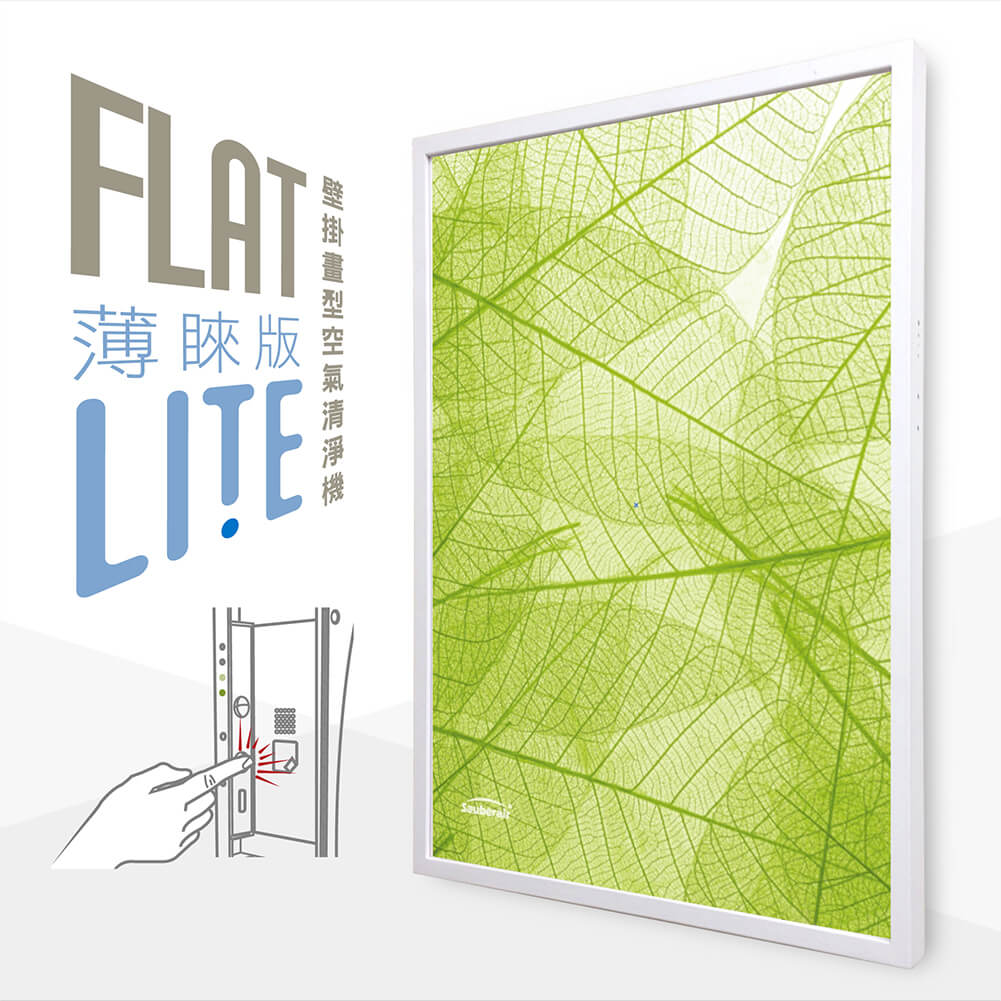Wall Mount Air Purifiers, The advantages
Most air purifiers are floor-standing, which not only take up space but also make filter replacement inconvenient. The biggest issue is the poor circulation efficiency of floor-standing models. Due to the intake and exhaust vents being close to the ground, especially the exhaust vent, which is usually lower than our mouth and nose, when droplets are expelled from our mouth and nose, some are absorbed by the air purifier, but others may not be absorbed or settle to the ground due to gravity. There is a high chance that the airflow from the exhaust vent will reintroduce these droplets back into the space, similar to a volcanic eruption, carrying them to a higher altitude. This is essential for use in public spaces such as daycare centers, kindergartens, offices, conference rooms, restaurants, clinics, and wards. Because using a floor-standing air purifier will cause droplets to spread again.
Everyone produces many visible and invisible particles during breathing (both calm and deep breathing), talking, sneezing, and coughing. These particles range in diameter from 0.01 to 500 microns (μm). When the diameter is greater than 10 microns, they settle to the ground due to gravity, referred to as "settled dust." When the diameter is ≤10 microns, they can remain suspended in the air, known as "suspended particles." These suspended droplets may contain infectious bacterial cells or viral particles, which are important factors in the transmission of respiratory diseases.

The wall-mounted design of the FLAT air purifier has an intake vent positioned at the height of our mouth and nose. When droplets are produced, larger particles quickly settle to the ground due to gravity, while smaller, floating suspended particles are filtered by the FLAT at mouth and nose height. Clean air is then blown out from a higher exhaust vent, using the Coanda effect (airflow adhesion effect) to quickly circulate clean air throughout the room via the ceiling. This top-to-bottom circulation of clean airflow ensures that the more polluted lower layer of air is not reintroduced into the upper space by the strong airflow from the air purifier, preventing it from being inhaled.

Everyone produces many visible and invisible particles during breathing (both calm and deep breathing), talking, sneezing, and coughing. These particles range in diameter from 0.01 to 500 microns (μm). When the diameter is greater than 10 microns, they settle to the ground due to gravity, referred to as "settled dust." When the diameter is ≤10 microns, they can remain suspended in the air, known as "suspended particles." These suspended droplets may contain infectious bacterial cells or viral particles, which are important factors in the transmission of respiratory diseases.

The wall-mounted design of the FLAT air purifier has an intake vent positioned at the height of our mouth and nose. When droplets are produced, larger particles quickly settle to the ground due to gravity, while smaller, floating suspended particles are filtered by the FLAT at mouth and nose height. Clean air is then blown out from a higher exhaust vent, using the Coanda effect (airflow adhesion effect) to quickly circulate clean air throughout the room via the ceiling. This top-to-bottom circulation of clean airflow ensures that the more polluted lower layer of air is not reintroduced into the upper space by the strong airflow from the air purifier, preventing it from being inhaled.

Reference:
- Chang Gung Medical Journal, Vol. 45, No. 7, published on July 1, 2024, "Discussing the Health Threats and Prevention of 'Droplets' from COVID-19 to the Human Body."
https://www.cgmh.org.tw/cgmn/category.asp?id_seq=2002002 - National Library of Medicine, Fluid dynamics of in the context of COVID-19: Airborne and surfaceborne transmissions, Phys Fluids (1994). 2021 Aug; 33(8): 081302.
https://www.ncbi.nlm.nih.gov/pmc/articles/PMC8404377/
| Recommended |

FLAT-LITE Manual Version
Experience the benefit of FLAT in the most economical way!
Smart Package
US$ 599

FLAT™ Wi-Fi / IoT
Perfect blends into your home decor and frees up floor space.
Smart Package
US$ 899

FLAT-BT IoT + Bt Speakers
Let your nose, eyes and ears get the best feeling at the same time.
Smart Package
US$ 999



